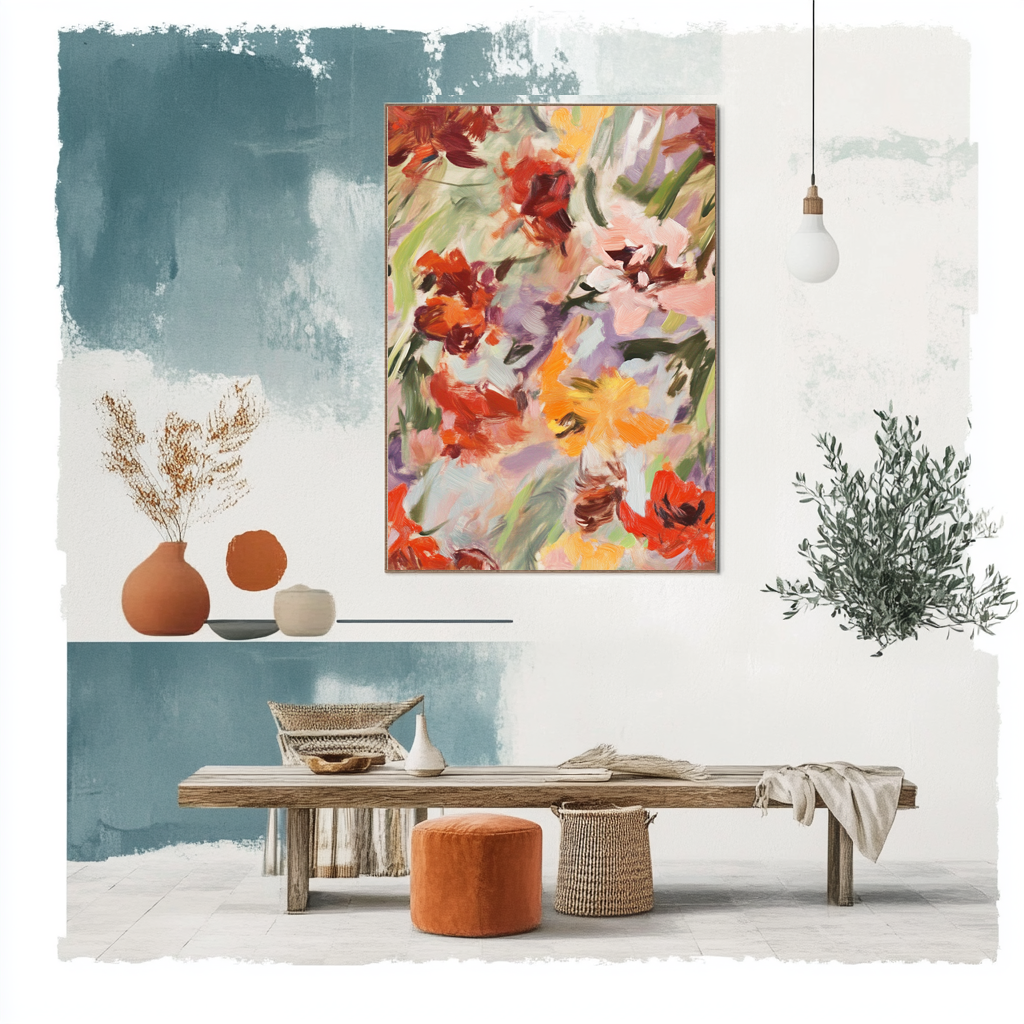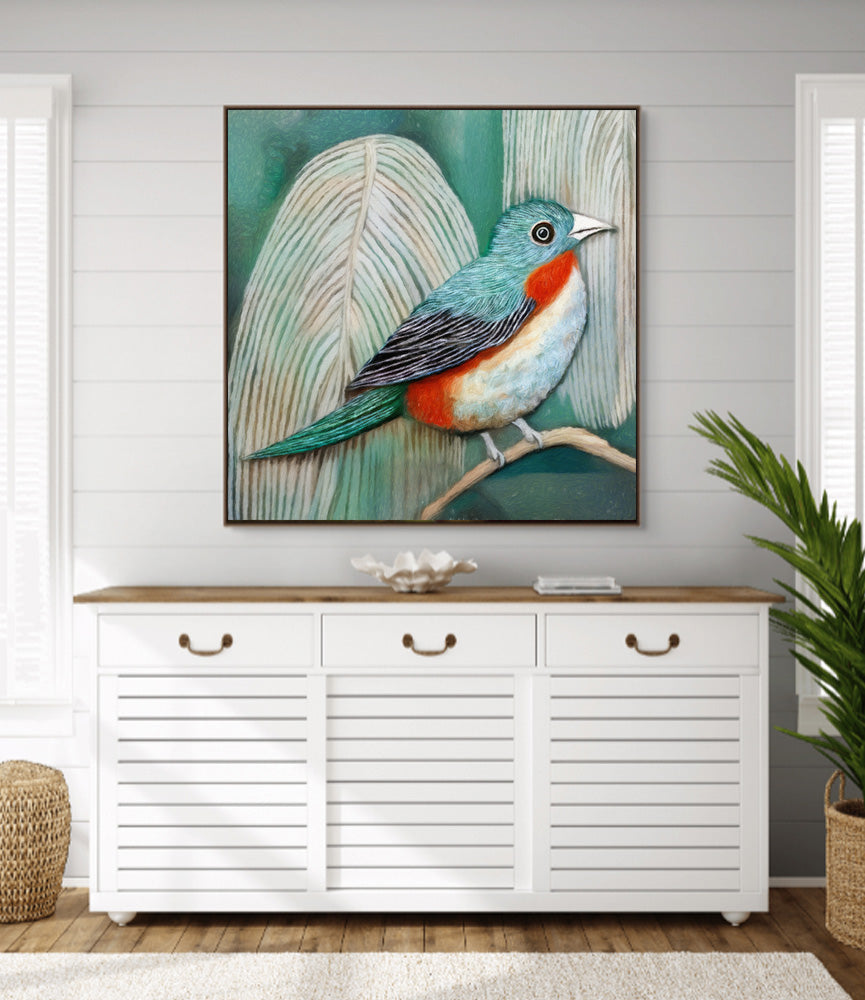Wall art is one of the most effective tools in interior design, capable of transforming an otherwise bare or unremarkable wall into a powerful focal point. The right wall piece has the ability to elevate a space, define its aesthetic, and reflect the personality and values of those who inhabit it. In 2025, wall art is not just about decoration; it's a key element in creating a cohesive and engaging living environment. Whether the goal is to bring a touch of elegance, vibrancy, or calm, curated art can be strategically selected to enhance any room. This research explores how to transform empty walls into remarkable spaces through art that suits a variety of styles, from minimalist to maximalist, and everything in between.
The Impact of Wall Art on Interior Design
Before diving into specific concepts, it’s essential to understand why wall art is such a transformative element in interior design. Art influences the emotional and psychological tone of a room, making it not only a visual addition but an integral part of the room’s overall atmosphere.
Key Considerations:
· Emotional Resonance: Wall art can evoke a range of emotions—calm, excitement, nostalgia, or creativity—depending on its colors, subject matter, and style. This emotional connection is essential in creating spaces that feel comfortable and personal.
· Defining a Room’s Identity: The right artwork helps to define the character of the room. A striking piece of art can serve as a conversation starter, set the mood, or unify the decor, tying together various elements like furniture, color schemes, and lighting.
· Focal Point Creation: Art naturally draws the eye. A carefully selected piece can create a focal point in a room, drawing attention to the wall while helping to balance out other design elements in the space.
Concept 1: Minimalist Art for Clean, Sophisticated Spaces
Minimalism continues to dominate the design world, and it’s easy to see why. Clean lines, neutral tones, and subtle artistry provide a sense of calm and order, making minimalist art an ideal choice for contemporary spaces.
Key Elements:
· Simplicity and Elegance: Minimalist art typically focuses on geometric shapes, monochromatic color schemes, and subtle textures. Works in black-and-white or neutral tones can create an elegant, understated ambiance in modern living rooms, offices, or bedrooms.
· Focus on Space: In minimalist design, the space surrounding the artwork is just as important as the art itself. Large, empty areas around the piece create a sense of openness and allow the viewer to focus entirely on the artwork without distractions.
· Nature-Inspired Minimalism: Incorporating nature-inspired minimalist art, such as simple depictions of landscapes, trees, or oceans, complements clean spaces and brings a touch of serenity and natural beauty into the home.
Concept 2: Eclectic Art for Dynamic, Personalized Interiors
For those seeking to reflect a unique personality and create an engaging atmosphere, eclectic art is the perfect choice. This style embraces a mix of various themes, colors, and materials, offering endless possibilities for wall decor.
Key Elements:
· Diverse Mediums: Eclectic art often combines photography, painting, sculpture, and even textile art. A carefully curated mix of mediums can provide dynamic contrast and intrigue in the room, breaking up uniformity with various textures and materials.
· Vibrant Color Palettes: Bright, bold colors are the hallmark of eclectic art, making it perfect for creating lively, energizing spaces. Whether in a living room or home office, vibrant art creates an inviting, spirited atmosphere.
· Personal Expression: Eclectic wall art often includes personal touches, such as family photographs, cultural artifacts, or items that reflect individual experiences. These personalized pieces help tell a unique story, making the space feel more authentic and lived-in.
Concept 3: Bohemian Art for Relaxed, Warm Spaces
Bohemian (Boho) art has long been associated with free-spirited, eclectic living, characterized by a mix of textures, colors, and cultural references. In 2025, this style continues to evolve, offering homeowners an opportunity to create rich, warm spaces that feel relaxed and inviting.
Key Elements:
· Rich Textures and Layers: Boho art often incorporates textiles, tapestries, and macrame, adding visual and tactile layers to the room. Wall art in this style creates a sense of warmth and comfort through its varied textures and intricate patterns.
· Earthy and Warm Tones: Warm, earthy colors such as terracotta, mustard, deep reds, and browns define the Bohemian aesthetic. Artworks in these colors, especially those featuring abstract patterns or botanical motifs, contribute to a cozy and grounded feel in the home.
· Cultural and Vintage Influences: Bohemian art often celebrates global cultures and vintage elements. Incorporating vintage prints, indigenous art, or traditional craftwork not only adds visual interest but also connects the room to a larger world of cultural stories and traditions.
Concept 4: Industrial Art for Bold, Urban Interiors
Industrial design thrives on raw, unfinished materials and a minimalist aesthetic that celebrates the beauty of exposed brick, concrete, and steel. Art in an industrial setting should echo this aesthetic while providing a visual contrast that emphasizes the stark beauty of the environment.
Key Elements:
· Raw Materials and Urban Themes: Industrial art often features metal sculptures, black-and-white photography of cityscapes, or abstract works that reflect the urban environment. This type of art complements the raw, unfinished look of industrial spaces, such as lofts or modern apartments.
· Muted, Dark Palettes: In industrial interiors, art often incorporates muted tones like charcoal, gray, and rust, which align with the steel and concrete finishes typical in industrial spaces. These colors help maintain the raw, edgy aesthetic while providing depth and contrast.
· Large-Scale Artwork: Bold, oversized art works well in industrial spaces with high ceilings and open layouts. A large canvas or metal sculpture can become the focal point of the room, making a strong statement and grounding the space visually.
Concept 5: Nature-Inspired Art for Calming, Organic Interiors
Biophilic design, which emphasizes a connection to nature, is a growing trend in 2025. Nature-inspired wall art is a natural extension of this concept, bringing the outdoors inside and creating a serene, harmonious atmosphere.
Key Elements:
· Botanical and Floral Themes: Prints or paintings of plants, flowers, and trees evoke feelings of calm and wellness. Large, leafy plants or vibrant floral compositions are perfect for living rooms or wellness spaces like yoga studios.
· Landscape Art: Scenic landscapes—beachfronts, forests, mountains—serve as powerful reminders of the natural world, helping to transport individuals to a peaceful, calming environment. These works are especially effective in bedrooms or spaces intended for relaxation.
· Earth Tones and Soft Blues: Earthy tones such as greens, browns, and blues are prominent in nature-inspired art. These colors contribute to a peaceful and grounding atmosphere, enhancing the overall feeling of tranquility in the room.
Conclusion
Transforming empty walls into remarkable spaces is an art in itself, requiring thoughtful selection and curation of artwork that complements both the aesthetic and function of the room. From minimalist designs that bring sophistication and calm, to eclectic art that adds dynamic energy and personal flair, there are countless ways to personalize and elevate a space. By understanding the impact of different art styles—ranging from Bohemian warmth to industrial boldness, and nature-inspired serenity—homeowners can create spaces that resonate with their personal style and create the perfect environment for both relaxation and inspiration. Whether seeking to energize a room or calm the senses, the right wall art concept is the key to unlocking a room’s full potential.






